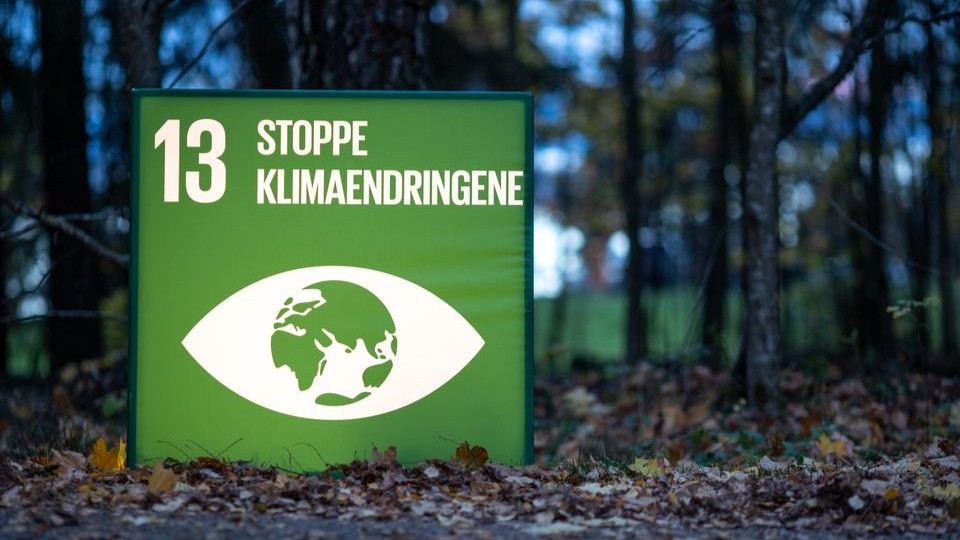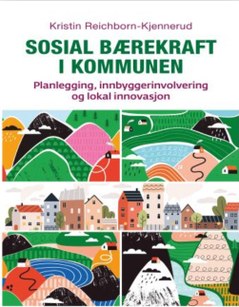How Nordic local authorities can create social sustainability
A new book from Kristin Reichborn-Kjenner describes how municipalities can create social sustainability in practice. “Sustainability is more than climate, Teslas and battery factories,” says the research professor from the Work Research Institute at OsloMet.
Kristin Reichborn-Kjenner recently launched her book “Social sustainability in municipalities – planning, citizen involvement and local innovation”.
She argues that social sustainability has become the “stepchild” in municipalities’ sustainability efforts. She says this is because social sustainability is perceived to be difficult to understand and measure.
“It appears politicians and decision-makers find it easier to embrace battery factories and high executive salaries than to do something about issues like the food or clothing systems,” she said at the book’s launch.
Sustainability on paper only
The Nordic report “The Nordic View on Sustainability” was launched during the July 2024 UN summit. It was written by Nordregio on commission from the Nordic municipal organisations, and highlights how municipalities in the Nordics work with the UN Sustainability Goals.
The report shows that a large proportion of municipalities integrate their sustainability goals in their governance documents, but also that this is often limited to goal formulations and overarching plans.

Sustainable Development Goal 13 is about stopping climate change. Photo: UN Association/Eivind Oskarson
For instance, 93 per cent of Finnish municipalities have implemented sustainability goals in their strategy documents, while only 35 per cent of municipalities in Iceland have done the same.
The municipalities’ top priority sustainability goals are:
- UN Sustainable Development Goal 3: Good Health and Well-Being
- UN Sustainable Development Goal 11: Sustainable Cities and Communities
- UN Sustainable Development Goal 13: Climate Action
Many municipalities say they have limited capacity and resources to work with sustainability goals.
How we are actually doing
So what exactly is sustainability? It is a wide term. When we talk about social sustainability, it often refers to the qualities of a neighbourhood, local community, or larger society related to social conditions.
It is an umbrella term for various factors that influence people's living conditions and quality of life.
The new book includes examples from projects such as "Buy Sustainably" at OsloMet, led by Reichborn-Kjenner. The project explored how municipalities can create sustainability effects through their purchasing practices.
Fourteen Norwegian municipalities participated. Buying and wasting less was a key issue, as well as incorporating sustainability requirements into contracts.
Starting small
Reichborn-Kjenner underlines that sustainability efforts cannot succeed if it is not anchored in the municipality’s leadership and with politicians. Changing procurement practices or working methods will require effort and resources.
“The municipality must know what it wants. You need a vision for what the local society should look like,” she says.
Reichborn-Kjenner points out that the municipalities must avoid so-called sustainability washing – pretty words about sustainability without the action to back it up.
“Great websites listing sustainability goals are no good if the municipality buys chemically treated bananas and discards fully usable furniture,” she says.
She recommends starting with the low-hanging fruit: Could you make the lunch more sustainable? Organise a free second-hand market?
Look after the dedicated individuals
Another important point is to support employees and dedicated individuals, and avoid time-consuming application processes and documentation requirements.
Reichborn-Kjenner encourages the municipalities to listen to the local communities: What are people missing? What is already happening in terms of sustainability initiatives that could be given more space?
“Give those who are dedicated room to act,” she says.
Laws and regulations do allow for space to act
The book shows how legal frameworks like the planning and building act and procurement regulations can be used strategically to create good, socially sustainable spaces. It also describes a four-step research-based method for creating sustainable changes in organisations.
The public sector buys goods and services for nearly 800 billion Norwegian kroner every year (€69bn). The potential to steer societal development in a sustainable direction is enormous, but according to Reichborn-Kjenner, this is not currently being realised.
She refers to a report from the consultancy firm BDO, which shows that 84 per cent of Norwegian companies believe the municipalities should play a more active role in sustainable change – while just 21 per cent say they experience that this actually happens.
The researcher believes one of Norway’s largest challenges now is that large, exclusive framework agreements make it difficult to buy from smaller companies.
“Many employees wish to act in a socially responsible way but fear sanctions if they prioritise anything other than budgets. So they carry on as before,” writes Reichborn-Kjenner in the book.
She also provides a recipe for how contract design and follow-ups can be used to create environmental, social and economic benefits.
- Book and report about sustsainability in municipalities
-
The book “Social sustainability in municipalities – planning, citizen involvement and local innovation”, by Kristin Reichborn-Kjenner. Publisher: KL
The report “The Nordic View on Sustainability. Learning from the Local level” by Nordregio. Commissioned by: Nordic Associations of Local and Regional Governments.


 Follow us on Facebook
Follow us on Facebook
